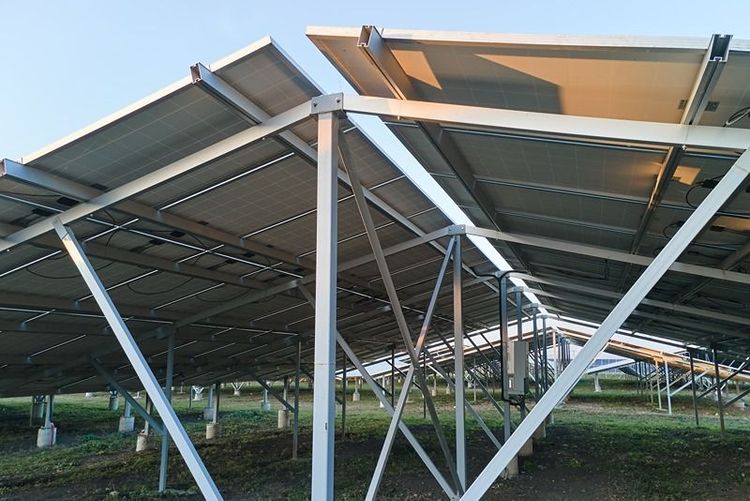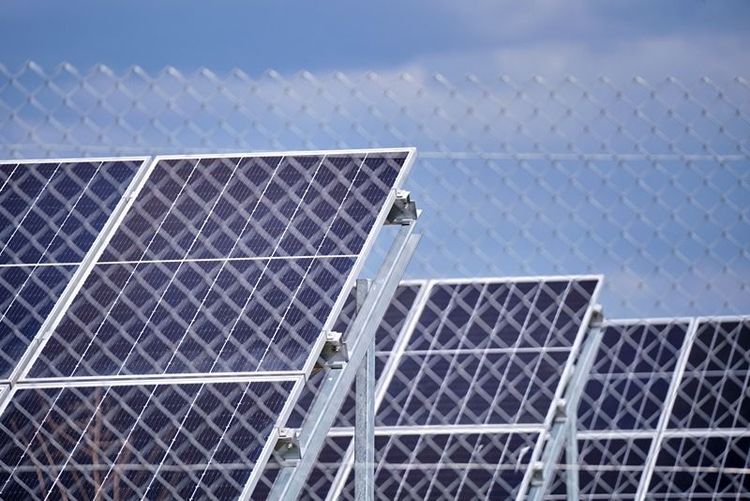Steel reinforcement plays a vital role in the durability and stability of ground-mounted solar panels, ensuring they can withstand environmental forces like wind, rain, and seismic activity. Here are keyways in which steel reinforcement strengthens these structures:
1. Tensile strength and load distribution
Steel is renowned for its high tensile strength, which makes it a key material for handling the loads applied to ground-mounted solar panels. Steel's ability to resist bending or breaking under tension ensures that the solar structure can support the weight of the panels without sagging or collapsing. Steel is used in the frames, racking, and foundations in ground-mounted systems, offering a robust framework that distributes weight evenly across the structure.
For example, in utility-scale solar farms, hot-dip galvanised steel is often used because it provides both the strength to support large arrays and protection against environmental degradation. Steel's tensile strength allows it to handle wind loads, which are often a concern in open, exposed areas where solar panels are installed.
2. Corrosion resistance for longevity
Corrosion is a significant issue for outdoor structures, particularly those exposed to varying weather conditions. Steel used in solar mounting systems is typically galvanised, meaning it is coated with zinc to prevent rust and corrosion. Galvanised steel provides excellent resistance to corrosion, which extends the lifespan of solar installations by preventing deterioration of the metal. The zinc layer acts as a barrier, protecting the steel from moisture and other corrosive elements in the atmosphere.
How steel reinforcement strengthens ground-mounted solar panels?


3. Foundation stability with steel piles
One of the most critical components in ground-mounted solar systems is the foundation, where steel piles or posts are often driven deep into the ground. These piles provide structural stability by anchoring the entire system. Steel piles are designed to handle vertical loads from the weight of the panels and lateral forces from wind or seismic events.
Steel piles are often driven several meters deep, depending on soil conditions and wind loads, ensuring the mounting system is securely anchored. The piles can also be installed using driven pile systems or screw piles, depending on the site conditions. Screw piles offer flexibility in difficult terrains and are easy to install without extensive ground disturbance
4. Wind load resistance
Solar panels installed on the ground are exposed to significant wind loads, which can cause vibrations or even displacement if not properly accounted for. Steel reinforcement, particularly in the framing and foundation, ensures that the structure remains stable during high wind events. The steel framing is designed to resist uplift forces, which occur when wind exerts upward pressure on the panels.

5. Optimisation for tilt and sun exposure
Steel reinforcement is also critical in ensuring that ground-mounted solar panels are positioned at the optimal tilt angle for maximum sunlight exposure. Steel racking systems allow for precise adjustment of the panel angles, ensuring that they can capture the most sunlight throughout the day. High-quality steel ensures these systems remain stable over time, preventing any sagging or movement that could alter the panel's orientation.
Buy online
Mild SteelStainless SteelStructural SteelTMTCementJSW One MSME
About usBlogsSitemapJSW One TMTPolicy
Terms & conditionsPrivacy policyReturn policyBanking partner


 +91 7208055523
+91 7208055523
 Help & support
Help & support
